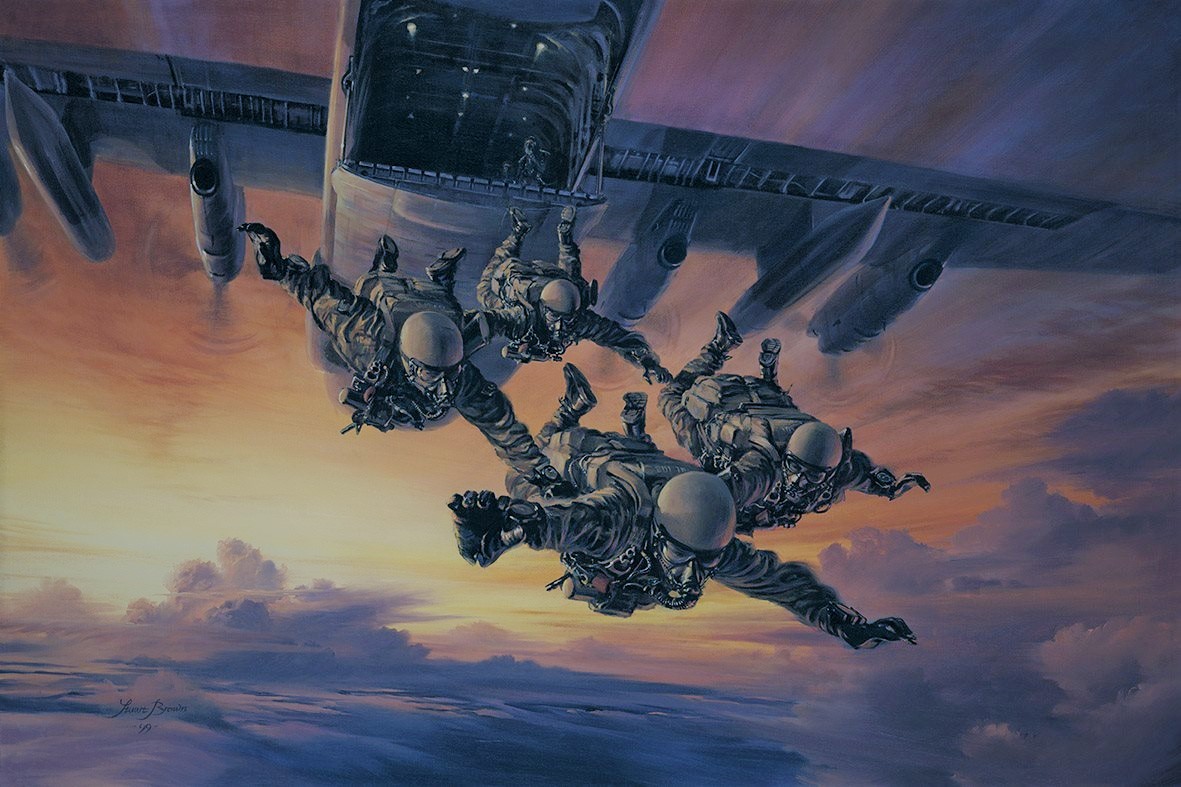Training Day~ Excerpt from Legends of the Dragonfly
The first four jumps were from three thousand feet and were routine drops, free falling to a little under a thousand feet (time out) before pulling our chutes. Recovery was good and fast from the water, and the RAF for once were on the ball. We had lunch in the officer’s mess and did our own chute repacking, watched over carefully throughout the process by one of their jumpmasters. Then it was time for us to board the Hercules, and we were off for the last jump of the day; the old adrenalin gland was working overtime all the way. It might seem strange that I remain anxious, but we all know the risks. I thought of my wife and children but kept my mind focused for the next few crucial moments. The weather was good with light winds and a clear blue sky.
I just completed oxygen training for the sixth time. The Hercules climbed; soon, it was time to exit. The pilot gave the outside temperature as minus 28 degrees Celsius at an altitude of 22,000 feet. Oxygen mask and goggles on, I knelt up and shuffled down the aircraft corridor after we all checked, and double-checked each other’s jump rigs. Number one jumpmaster gave the green light thumbs up as the door of the Hercules opened, depressurising the aircraft at 29,000 feet. I went out the door, followed by the rest of the chalk. The slip stream was incredible and never seem to lessen during my free-fall. Watching my time-out altimeter, I brought the canopy release cord into play, waiting for that gentle tug to arrest my fall.
After about ninety seconds free-fall rush, I was
down on time within my drop zone. There is always something to be said about
risk taking and how danger is the spice of life. It was all a good day’s work,
rounded up with a few drinks in the officer’s mess hall at the air base and
good cheer for our jumpers all round.
